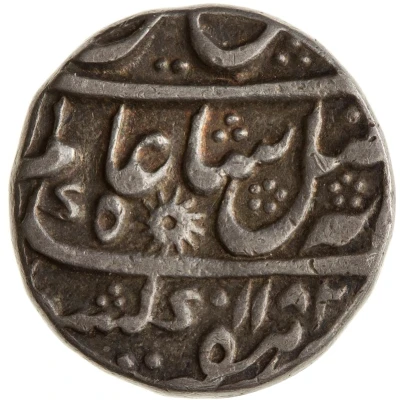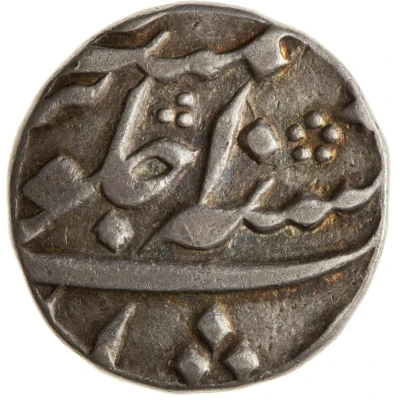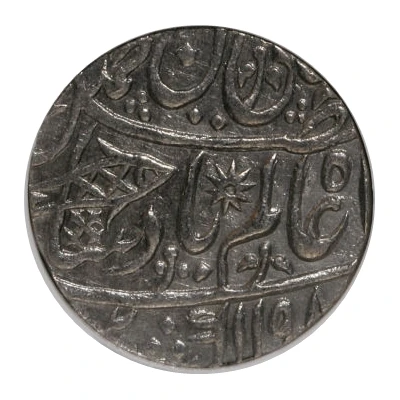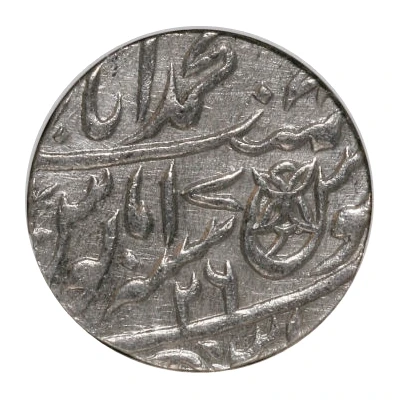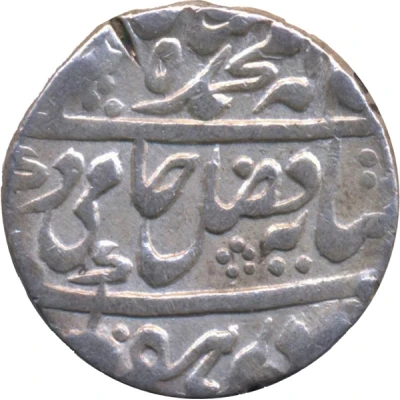
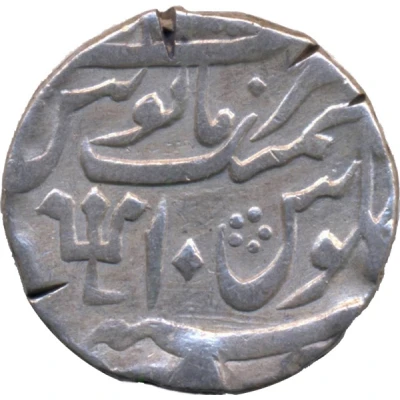

© Joshy Varghese
1 Rupee - Shah Alam II
| Silver | 11.6 g | - |
| Issuer | Bengal Presidency (British India) |
|---|---|
| Type | Standard circulation coin |
| Years | 1179-1183 (1766-1770) |
| Calendar | Islamic (Hijri) |
| Value | 1 Rupee |
| Currency | Rupee (1765-1835) |
| Composition | Silver |
| Weight | 11.6 g |
| Shape | Round |
| Demonetized | Yes |
| Updated | 2024-10-05 |
| Numista | N#80398 |
|---|---|
| Rarity index | 90% |
Reverse
Legend in Persian: Zarb Azimabad Sanat (RY)10 Julus Maimanat Manus
Lettering: ١٠
Translation: Struck at Azimabad in the 10th year of his prosperous reign
Edge
Plain
Comment
- After the Battle of Buxar, 1764, the Mughals as well as the Nawabs of Bengal lost effective control over the territories then constituting the province of Bengal, which currently comprises the Indian states of West Bengal, Bihar, Jharkhand, Odisha, as also some parts of Bangladesh. The East India Company was accorded the diwani rights, that is, the right to administer the collection and management of revenues of the province of Bengal, and parts of Oudh, currently comprising a large part of Uttar Pradesh. The diwani rights were legally granted by Shah Alam, who was then ruling sovereign Mughal emperor of Undivided India.The Battle of Buxar, which was fought hardly 115 km from Azimabad, heralded the establishment of the rule of the British East India Company in East India. During the rule of the British East India Company in Bihar, Azimabad (Patna) emerged as one of the most important commercial and trading centers of the East India, preceded only by Kolkata.
- Weight varies 10.70 - 11.60 grams, Mint mark: Trident.
- For earlier Rupee issues refer to Mughal listings.
- Previous KM #814
- Azimabad (Patna) mint
- See image for location of RY
Interesting fact
One interesting fact about this coin is that it was issued during a time of great turmoil in India, with the Bengal Presidency facing challenges from both internal conflicts and external threats, such as the Maratha Confederacy and the East India Company. Despite these challenges, the coinage of the region continued to be minted, with the 1 Rupee coin being a prominent denomination. The fact that it was made of silver also speaks to the value placed on this precious metal during that time period.
